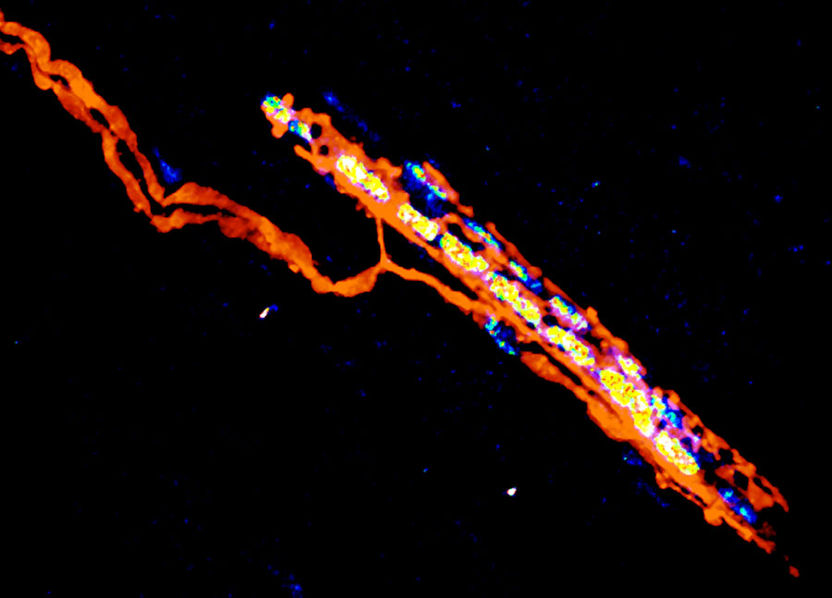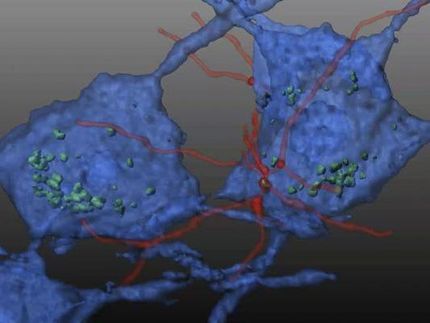Trigger mechanism for recovery after spinal cord injury revealed
After an incomplete spinal cord injury, the body can partially recover basic motor function. So-called muscle spindles and associated sensory circuits back to the spinal cord promote the establishment of novel neuronal connections after injury. This circuit-level mechanism behind the process of motor recovery was elucidated by Prof. Silvia Arber's research group at the Biozentrum, University of Basel and the Friedrich Miescher Institute for Biomedical Research. Their findings may contribute to designing novel strategies for treatment after spinal cord injuries and have now been published in the journal Cell.

Sensory nerve terminals (orange) of a muscle spindle.
University of Basel, Biozentrum
Spinal cord injuries often lead to chronically impaired motor function. However, patients with incomplete spinal cord injury can partially regain their basic motor ability under certain circumstances. It is believed that remaining uninjured spinal cord tissue provides a substrate to form new circuits bridging the injury. How this formation of new connections is triggered and promoted has remained unclear until now.
In collaboration with Prof. Grégoire Courtine's research group at the EPFL in Lausanne, the team of Prof. Silvia Arber at the Biozentrum at the University of Basel and the Friedrich Miescher Institute for Biomedical Research (FMI) has demonstrated in a mouse model why paralyzed limbs can move again after incomplete spinal cord injuries: A specific sensory feedback channel connected to sensors embedded within the muscles – so-called muscle spindles – promotes the functional recovery of the damaged neuronal circuits in the spinal cord.
Muscle spindle sensory feedback provides trigger signal for recovery
Limb movement activates sensory feedback loops from the muscle to the spinal cord. This specific feedback channel promotes the repair process of the damaged spinal network after injury. As a result, basic motor function can be restored. “The sensory feedback loops from muscle spindles are therefore a key factor in the recovery process,” says Silvia Arber. After spinal cord injury, these nerve impulses keep providing information to the central nervous system – even when the transmission of information from the brain to the spinal cord no longer functions.
“An important trigger for the recovery process is the information conveyed from the muscle to the central nervous system and not only the top-down information the brain sends towards muscles,” explains the first author Aya Takeoka. In addition, the researchers demonstrated that only basic locomotor functionality could be restored spontaneously after an injury. Fine locomotor task performance tested, however, remained permanently lost.
Treatments must start with activation of muscle spindles
The study suggests that activation of muscle spindles is essential to promote the recovery process of damaged neuronal networks after spinal cord injury. Thus, therapeutic approaches should aim to extensively use the muscles, even if passively after an injury. The more intensely muscles are used in the movement process, the more muscle spindle feedback circuits are stimulated. By applying this principle, the repair of neuronal circuits and the accompanying recovery of basic motor skills will have the best chances of succeeding.




















































